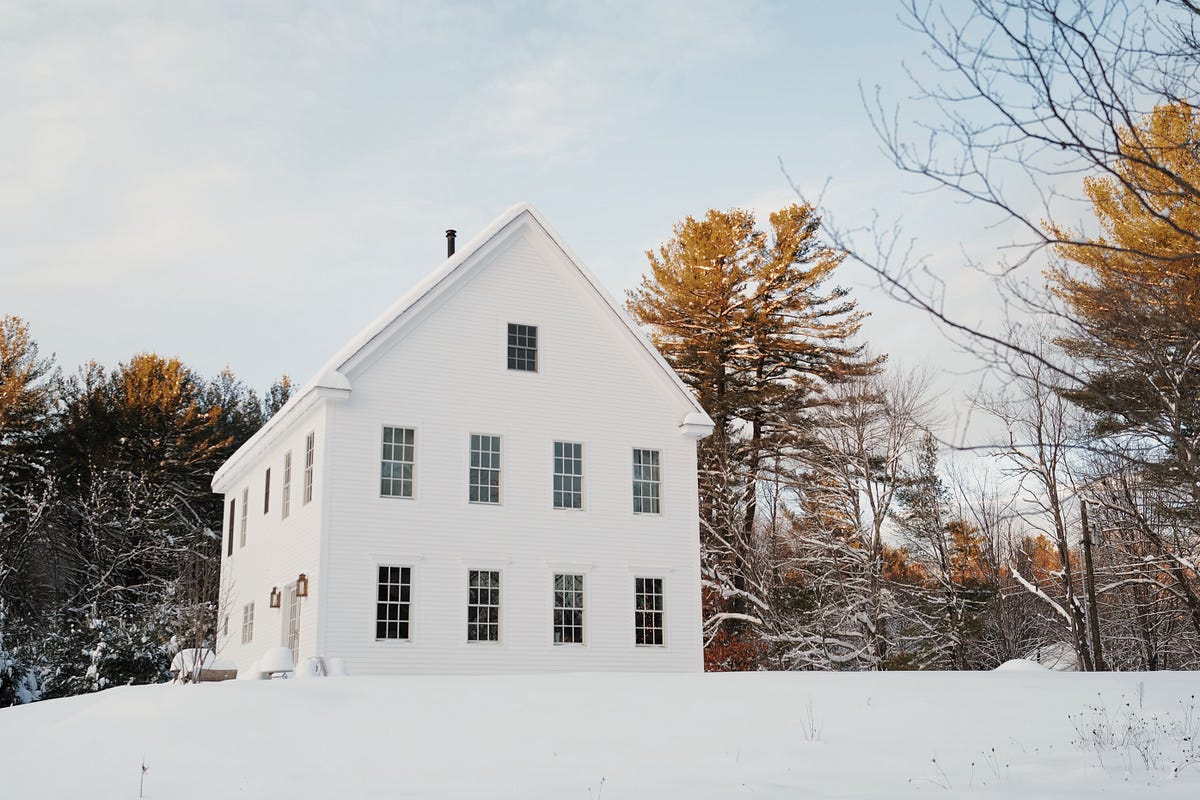Some friends and I have kicked around the idea of buying a big plot of land and custom-building houses on it for a while now. This post is an attempt to jot down some of my thoughts on what a good house is like.
This post, Designing a New Old Home, caught my attention:

Some of the decisions they made in building their house aren't the same ones I'd make. But a lot of what Simon writes resonates very powerfully with me. For example:
Homes are not built by people intending to live in them. Instead, they are built by builders, who mostly want to flash-form 60 “units” overnight out of sticks and drywall. Everything from sun positioning to doorknobs becomes not just an afterthought, but a no-thought.
Looking at house plans, there are a whole lot of decisions that make no sense on the surface. Who would want a house where the front door opens into your dining room? Why is the shower off the kitchen? Why is there a "bonus room" with no apparent purpose?
I want to build a house to live in, where every detail is just right and carefully thought out. Paying a little extra for quality is worth it, because I expect to amortize the difference over the course of decades in the house–and because it's quality for me, not for profit's sake.
100% of electric needs met by solar
When you're pricing out whether to retrofit an existing home with solar, the math can be complicated. But when you're building a new house from the ground up, I think it's a no-brainer: the house should be able to meet 100% of its electricity needs through solar, using something like a Powerwall for nighttime coverage.
I'm not particularly driven by the long-term cost savings or the environmental impact (though both are great), but by a sense of independence. I grew up in... exurban?... New Hampshire. A light hurricane or a heavy snowstorm often meant several days without power, and this is taken as normal.
This isn't to say that the home should be off-grid. Having the power grid available is great, especially if you do it right and are turning a monthly profit with net metering. But what's important to me is that, when a storm knocks out power for a couple of days, you're not in the dark or without heat. I'm fine considering 100% to be a net measurement (where it might occasionally be necessary to depend on the grid, but at the end of the month I've produced at least as much as I've used), so long as basic functions like lighting, heat, and a well pump can continue.
Bedrooms go upstairs
This has the downside of making aging in place harder, but in a multi-story home, I like the clean divide with the top floor being bedrooms, and the ground floor being more suited for entertaining.
Radiant, hydronic floors
Heated floors seems like a luxury. They are outrageously expensive to retrofit. But when you're building new, they're only nominally more expensive, and they're more efficient. Like with solar, paying a little more up front to reap the benefits over the course of the next few decades seems like a solid investment.
Geothermal heat pump
I'm actually conflicted on this one and whether it's cost-effective.
The ideal is this: with "free" electricity (due to the 100% solar bit above), the ideal is to not rely on oil or gas for heat. Heat pumps in general act like an air conditioner in reverse, extracting heat from outside air and directing it inside. Even on relatively cool days, this can be more efficient than using electric resistance to generate heat. But the concept doesn't work well in extreme cold: the most cold-hardy heat pumps I've seen stop working at 15° F. There are always some winter days (and especially nights!) in New England that get colder than that, and a <15° day would be a particularly lousy one for your heat to stop working.
If the heat pump, instead of drawing heat from ambient air, can use glycol-filled tubes buried underground (below the frostline), it doesn't have to warm 15° air to extract heat; the incoming liquid is already at least 50° and there's plenty of heat to be extracted.
Air conditioning with the same system also works great for the same reasons.
The problem is that it looks like net installed costs are often something like $25,000. (Repairs to the coils can also be burdensome, since it involves excavation.) The system will probably pay for itself in the long haul, but it's not as clear-cut a decision as some of other ideas with a payback of just a few years.
The washer & dryer go with the bedrooms
In most places I've lived, doing laundry involves lugging your dirty clothes down the stairs, and then hauling it back up the stairs.
It's not like this is a tremendous inconvenience, but it doesn't make a whole lot of sense. Why wouldn't you keep the washer and dryer near the bedrooms?
Not an ultraflammable tinderbox
One of my European colleagues pointed out one day how weird they thought it was that we build our entire houses out of wood. Europeans aren't immune to fire, but building one's home entirely of flammable materials feels equivalent to the Three Little Pigs continuing to build straw houses. (Their building material choices, incidentally, seem to offer about the same safety whether the threat is wolves or fire.)
More than anything, the reluctance to adopted residential fire sprinklers baffles me. They are tremendously effective (headphone warning on that link), and the water damage concerns are ludicrously misplaced when considering the alternative.
